Everything you need to know about getting $50/mo. off your internet bill

The Federal Communications Commission's (FCC) Emergency Broadband Benefit is about to go live. Here's how to see if you're eligible.
Most American families may soon be able to breathe a sigh of relief from the rising cost of internet access. A new government initiative aims to assist eligible households in getting online by offering monthly broadband service credits as well as a device discount.
The Federal Communications Commission (FCC) decided on Feb. 25 to enact an Emergency Broadband Benefit program (EBB program), which would help eligible low-income households subsidize the cost of internet access. The program will cost $3.2 billion and will begin accepting applications in late April.
Which internet service providers are participating in the program?
The EBB program is accepted by the majority of internet service providers. CenturyLink, HughesNet, and Viasat were the only significant exceptions we found. While these providers do not currently provide the Emergency Broadband Benefit, they will choose to participate in the program once it becomes available. Unfortunately, Cox is the only national provider offering the $100 device discount at the moment, although a range of smaller, regional providers do as well.
What does the Emergency Broadband Benefit program provide?
Qualifying households can receive a $50 credit on their monthly internet bill as part of the scheme. For those who live on tribal lands, the credit rises to $75 a month. All qualifying households can save up to $100 on a laptop, desktop computer, or tablet, but they must pay between $10 and $50 for it and buy it via their internet service provider (ISP). Unfortunately, Cox is currently the only major provider that has chosen to participate in the system portion of the benefit.
This is a short-term solution to the COVID-19 pandemic. The benefit will stop when the fund runs out of money or six months after the COVID-19 emergency is declared over by the Department of Health and Human Services, whichever comes first.
You may apply via your ISP or the Universal Service Administrative Company (USAC), which manages the Lifeline and EBB services, once the program is available. The FCC will then confirm your eligibility for the scheme, and the $50 a month discount will be added to your internet bill. The FCC will then reimburse your internet service provider directly. According to the FCC, this is the country's "largest-ever scheme" to assist low-income families in getting access to affordable internet.
Who qualifies for the Emergency Broadband Benefit?
If you meet one of the following criteria, you might be eligible for the FCC's Emergency Broadband Benefit program:
Your household's gross income is equal to or less than 135 percent of the federal poverty level.
You may already be eligible for Lifeline, SNAP (Supplemental Nutrition Assistance Program), Medicaid, or the Federal Pell Grant.
If your household income for 2020 was at or below $99,000 for single filers and $198,000 for joint filers, you suffered a significant loss of income after February 29, 2020, due to work loss or furlough.
You are eligible for free or reduced-price school breakfast and lunch, as well as the USDA Community Eligibility Provision.
You are a member of a tribe and live on tribal lands.
Remember, you only need to meet one of these requirements to qualify for the $50/mo. internet benefit.
Your income is at or below 135% of federal poverty guidelines
You'll be eligible for the EBB program if your gross household income in 2020 — the net income for anyone living in your home before taxes — was at or below 135 percent of federal poverty guidelines.
You participate in a qualifying program
If you're already participating in an approved program, you might be eligible for the Emergency Broadband Benefit in addition to your salary. The following are the services that will enable you to receive the subsidy:
Lifeline program:
If you already earn Lifeline benefits, you don't need to fill out a new application to use the EBB service.
Approved Service Provider Low-Income or COVID-19 Relief Program:
Your internet provider will apply to automatically enroll all participants in the Emergency Broadband Benefit if they already have a COVID-19 relief program.
Supplemental Nutrition Assistance Program (SNAP):
To see if you're eligible for SNAP, look up a full list of SNAP names in each state. Anyone in Puerto Rico, American Samoa, or the Northern Mariana Islands who is participating in a Nutrition Assistance Program is also eligible.
Medicaid:
Anyone enrolled in Medicaid is eligible for the EBB program.
Free and Reduced Price School Lunch Program or School Breakfast Program:
You'll be eligible for the EBB if a student in your household got free or reduced-price lunches during the 2019-2020 or 2020-2021 school years. Even if your child's school has been completely remote for the past year, you are still eligible for the EBB if they were getting it before entering the house.
Pell Grant:
Students awarded a Pell Grant in the current academic year are eligible.
Supplemental Security Income (SSI)
Federal Public Housing Assistance (FPHA)
Veterans and Survivors Pension Benefit
Bureau of Indian Affairs General Assistance
Tribally-Administered Temporary Assistance for Needy Families (TANF)
Tribal Head Start
Food Distribution Program on Indian Reservations (FDPIR):
The Food and Nutrition Service of the Department of Agriculture administers this federal program. “Award letters are usually issued by either an Indian Tribal Organization or another state agency,” according to the USAC. For more detail, see this list of state agency contacts for FDPIR.
How to apply for the Emergency Broadband Benefit
Many qualifying customers will be accepted automatically by other schemes, which is a good thing. If you already use Lifeline, you must either opt-in to the EBB with your current provider or request service from a new provider. The USAC suggests contacting an internet service provider involved in the initiative or speaking with your Lifeline provider about the internet access available to you.
What if you're not enrolled in Lifeline but have been using the internet provider's low-income or COVID-19 relief program? If the provider has obtained FCC authorization, you will still be accepted automatically. For more details, you'll need to contact your provider directly.
Ask your internet provider
If you already have home internet service, the FCC suggests using it to access the EBB. They should point you in the direction of the national verifier or their own eligibility procedure.
Apply online, by mail, or through your internet provider
When the program begins in late April, you'll have three options for applying. The fastest route is via the USAC's online platform, which accepts applications in both Spanish and English. You're more likely to get prompt approval or a request for further documents if you do it this way.
You may also print an application in English, Spanish, or eight other languages and mail it along with proof of eligibility to the following address:
Emergency Broadband Support Center
PO Box 7081
London, KY 40742
On your application form, the FCC recommends that you "write simply using black ink and capital letters." If you don't, your application will still be reviewed, but you'll get a faster response. You should also provide an email address with your mailed application so that USAC can easily contact you if they need additional details.
Finally, you should ask your internet service provider whether they participate in the EBB program and apply to them. They may have the authority to send applications on their own or can guide you through USAC's verification process. Once you've been licensed, you can select an EBB-approved provider in your area and sign up for service.
Documents that you need to provide:
You must have any paperwork that confirms your qualifications, regardless of how you apply. If you meet the requirements for one of the programs mentioned above, you must send a letter or official document from the previous 12 months (or with a future expiration date). Benefit award letters, acceptance letters, declarations of benefits, and benefit verification letters are examples.
You'll need to disclose your taxable salary if you meet the income criteria. For this form of verification, the following documents will suffice:
-Prior year’s state, federal or Tribal tax return
-Current income statement from your employer or a paycheck stub
-A Social Security statement of benefits
-Veterans Administration statement of benefits
-Unemployment or Worker’s Compensation statement of benefits
-Divorce decree, child support award, or a similar official document showing your income
-A retirement/pension statement of benefits
Related Posts
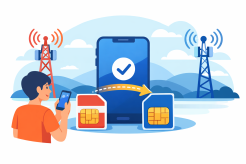
Tue, Jan 13, 2026 9:36 PM
cheap internet dealsHow Long Does It Take to Switch Phone Carriers?
Learn how long it takes to switch phone carriers, including number porting, plan selection, and tips for a seamless transition to better service and savings.
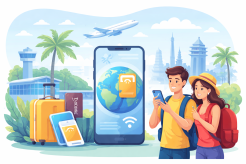
Tue, Jan 13, 2026 9:03 PM
TechnologyHow eSIM Helps You Stay Connected While Traveling Abroad
Discover how eSIM helps travelers stay connected abroad with instant activation, cost-effective plans, and reliable mobile data for seamless international travel.
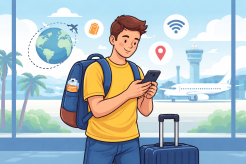
Mon, Jan 12, 2026 11:04 PM
SubscriptionHow to Use Your Cell Phone Internationally Without Breaking the Bank
Learn how to use your cell phone internationally with data plans, local SIMs, and Wi-Fi tips to stay connected without high roaming fees.
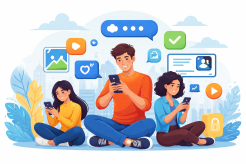
Mon, Jan 12, 2026 10:51 PM
WifiHow RCS Works: The Future of Messaging on Your Phone
Learn how modern messaging works and why it’s the future of texting with high-quality media, read receipts, and interactive group messaging.
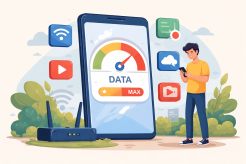
Fri, Jan 9, 2026 3:20 AM
RegulationsWhy Apps Keep Using Your Data in the Background (And How to Stop It)
Learn why apps keep using data in the background, how it affects your data cap, and simple ways to reduce background data usage without losing functionality.